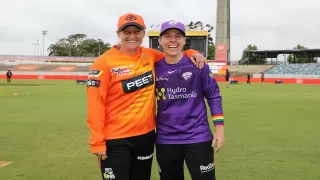NBA Betting Trends Defining the 2025-2026 Season

The 2025 - 26 NBA season tipped off on October 21, bringing fresh shifts to how games are being bet across the country. With new rosters, coaching changes, and unpredictable early rotations, both sportsbooks and bettors are adapting in real time.
In the opening weeks, markets have moved fast, often before tip-off, driven by insider updates, player usage, and public sentiment. This phase is less about stats and more about perception, timing, and adjustment. For bettors, recognizing how these early signals shape odds can offer a valuable edge in a season where trends appear fast and fade even faster.
Opening Lines Reflect a Wait-and-See Attitude
Oddsmakers are showing more caution than usual in the opening month. Even top-tier contenders have seen shorter spreads than expected, particularly in early road matchups. This restraint isn’t driven by stats but by the uncertainty around roster cohesion. With so many teams integrating new talent or retooling their systems, the books are taking fewer chances. The result is a more fluid start to the NBA betting season, where numbers shift quickly and assumptions are often tested within a single game slate.
This conservative approach can be seen in the number of pick’em lines and spreads under five points, especially in matchups between mid-tier teams. Bettors are responding by leaning more into game-day analysis, emphasizing line movement, injury reports, and insider news rather than trusting preseason projections.
Totals Reacting to Faster Game Flow
Even without a full month of totals data, there’s already noticeable activity in the over/under markets. Totals are creeping higher, and early-week lines are often moving within hours of opening. Many games are opening with totals in the mid-220s and rising quickly after team-specific news or lineup announcements.
This movement doesn’t come from long-term trends but from observed tempo and how aggressively coaches are pushing transition offense. Bettors are focusing more on pace indicators and rotation depth than offensive efficiency numbers. Books are reacting faster than in previous years, which leaves only a small window for early value on inflated or deflated totals.
Player Props Are Moving Hour by Hour
One of the clearest shifts so far is in the player prop markets. Prop totals for points, rebounds, and assists are being updated more frequently, especially for emerging players or new starters. Rookies and second-year talents with expanded roles have seen their lines rise significantly within just a few games.
This level of fluctuation shows how reactive these markets have become. Props that open in the morning can be outdated by tip-off, particularly when beat reporters leak rotation hints or players appear limited during warmups. Bettors who monitor local coverage or follow team insiders are gaining an edge by identifying changes before lines adjust.
Road Teams Are Covering Quietly
One early trend flying under the radar is the success of road teams against the spread. Bettors are noticing that travel-heavy matchups, which once signaled fatigue or disconnection, are no longer as straightforward. With teams managing travel more efficiently and lineups getting younger, road disadvantage is becoming less automatic.
This doesn’t mean blindly backing away teams, but it does suggest that home-court edge is weaker early on. Books have been slow to adjust for teams that show consistent composure on the road, and that’s created openings for value bets. Markets still favor traditional assumptions in this area, and savvy bettors are looking past them.
Injury Reports Are Creating Live Movement
Even before tip-off, injury-related rumors are shaping the betting board. Line movement now happens based on speculation as much as official confirmations. A morning report about a player being “questionable” often shifts lines in ways that can open or close value quickly.
The introduction of more transparency rules this season has also affected how teams disclose injuries. While this was intended to stabilize betting information, it has in fact created more reaction windows for bettors who monitor injury reports and NBA news across multiple sources. Books are protecting themselves by reacting faster, but bettors who track minute-to-minute updates still find opportunity in the gaps.
Early Public Action Is Skewing the Lines
With so many prime-time games in the first few weeks, public money is already having a bigger impact than usual. Certain matchups involving big-market teams have seen morning lines shift drastically by midday, driven more by perception than personnel.
This public sway creates volatility. Teams with high social visibility are drawing heavy action regardless of form or context, while smaller-market squads are being undervalued. Bettors who can separate buzz from balance are taking advantage of overreactions. Monitoring the spread movement timeline has become just as important as analyzing the matchup itself.
Same Game Parlays Are Driving Market Expansion
Same Game Parlays continue to gain traction, particularly in nationally televised matchups. Early in the season, bettors are gravitating toward customizable parlays built around a single game narrative. Books have expanded their offerings accordingly, allowing for more flexibility in combining point spreads, player props, and alternate totals. Within NBA betting, this format rewards creativity and timing over simple prediction.
What’s new this season is the speed of pricing correction. Books are adjusting odds within hours of public traction, and some SGP combos are becoming less profitable within a single game cycle. Bettors who build parlays early in the day are often locking in better value than those who wait closer to tip-off. This rewards preparation and timing more than gut feel or name recognition.
Value Plays Gaining Traction This Season
With the season still fresh, value doesn’t come from historical trends but from real-time analysis. Books are watching the same footage as bettors, but there’s still a lag in how adjustments are made on props, matchups, and alternate lines.
Teams that are outperforming their off-season expectations aren’t being priced accordingly yet. Bench scoring, rotation patterns, and coaching shifts are offering early clues. For bettors willing to dig beneath the surface, these early signs are where the edge lives right now. There is more volatility, but also more reward for those staying ahead of the curve.
Frequently Asked Questions (FAQ)
What are the major NBA betting trends for the 2025–2026 season?▼
The biggest trends include increased focus on player prop bets, live in-game betting, and advanced analytics influencing odds. Bettors are also relying more on AI-driven predictions and injury impact analysis.
How do player trades and team dynamics affect NBA betting odds?▼
Player trades and roster changes can significantly shift team chemistry and performance projections, leading sportsbooks to adjust odds quickly. Smart bettors monitor team updates to spot early value in the lines.
Which NBA teams are expected to perform above betting expectations in 2025–2026?▼
Teams with strong benches, solid defense, and emerging young talent often outperform betting lines. Keep an eye on mid-tier teams showing strong early-season metrics and consistent home performances.
Disclaimer
Possible11 is a sports news platform that provides live scores, player statistics, and tournament updates for informational and educational purposes only. We comply with the Online Gaming Bill, 2025 (India) and do not promote or engage with fantasy sports, betting, or real-money gaming platforms. All content is intended solely to enhance the sports experience. Possible11 is not affiliated with any fantasy or gambling applications and is not responsible for any financial gains or losses incurred on external platforms.











Give Your Feedback